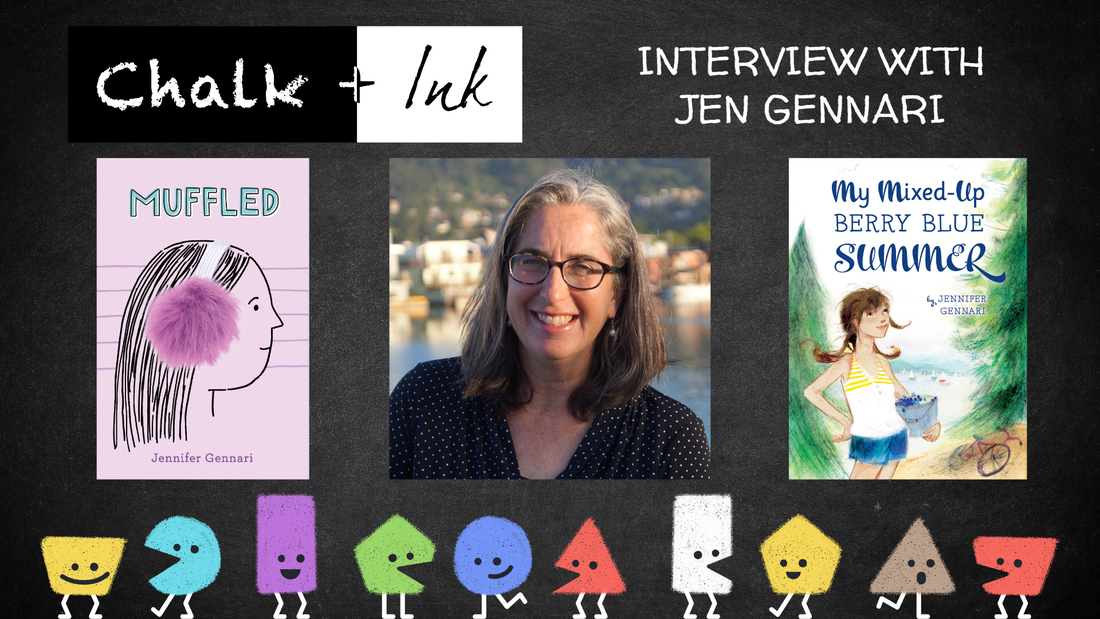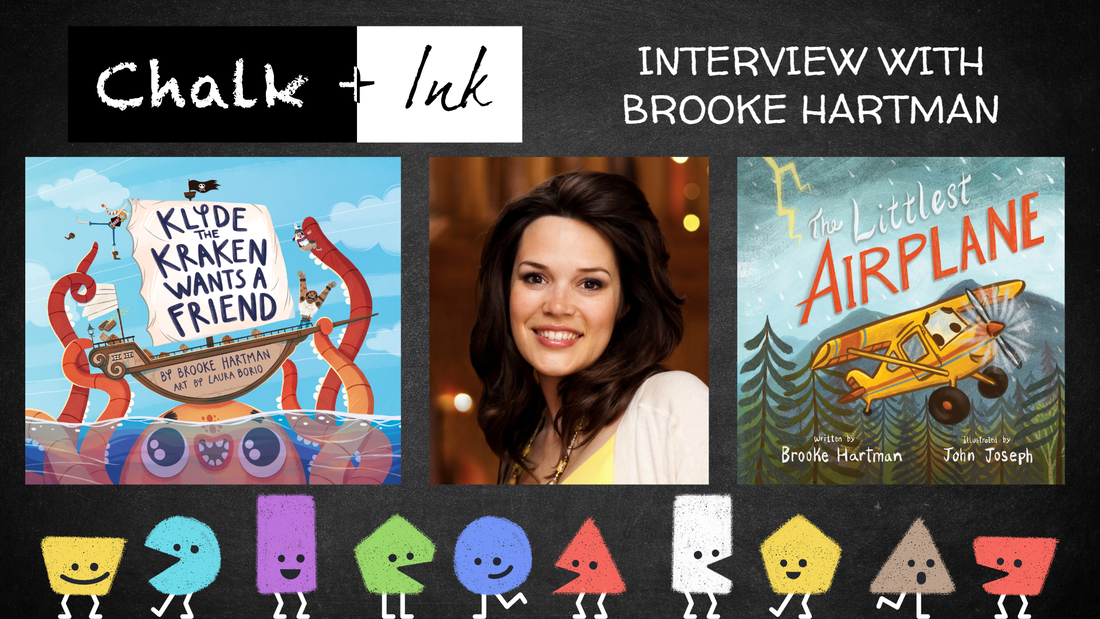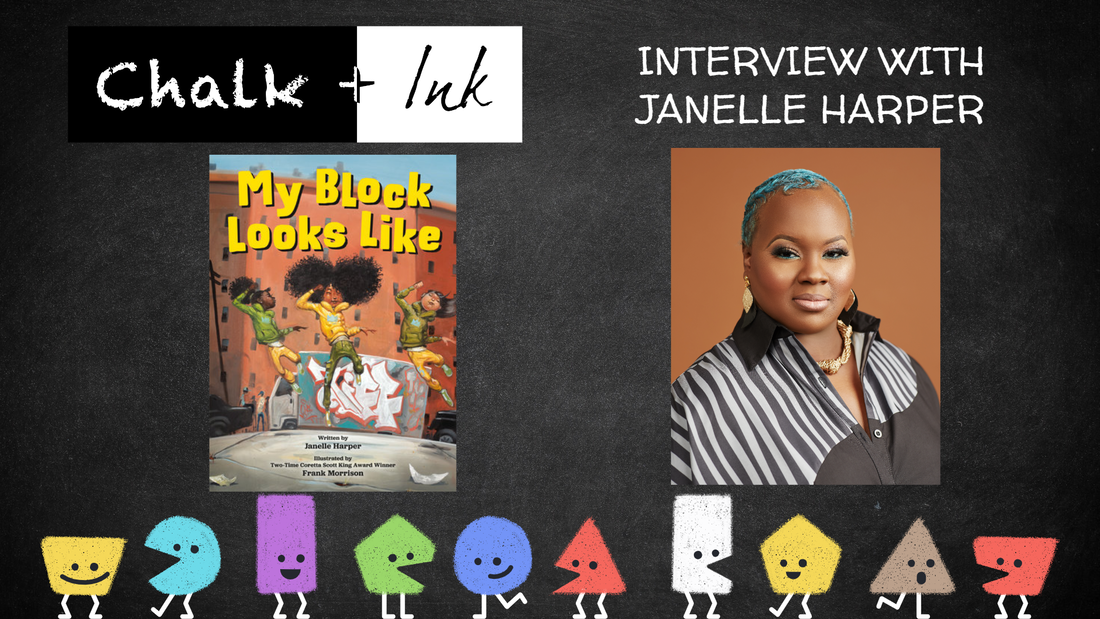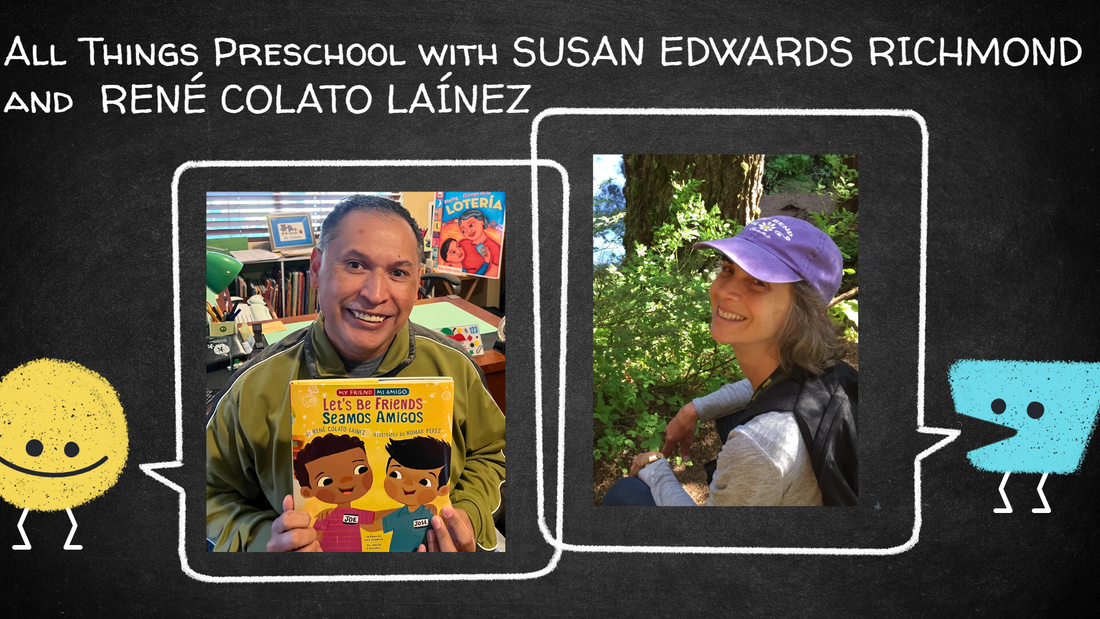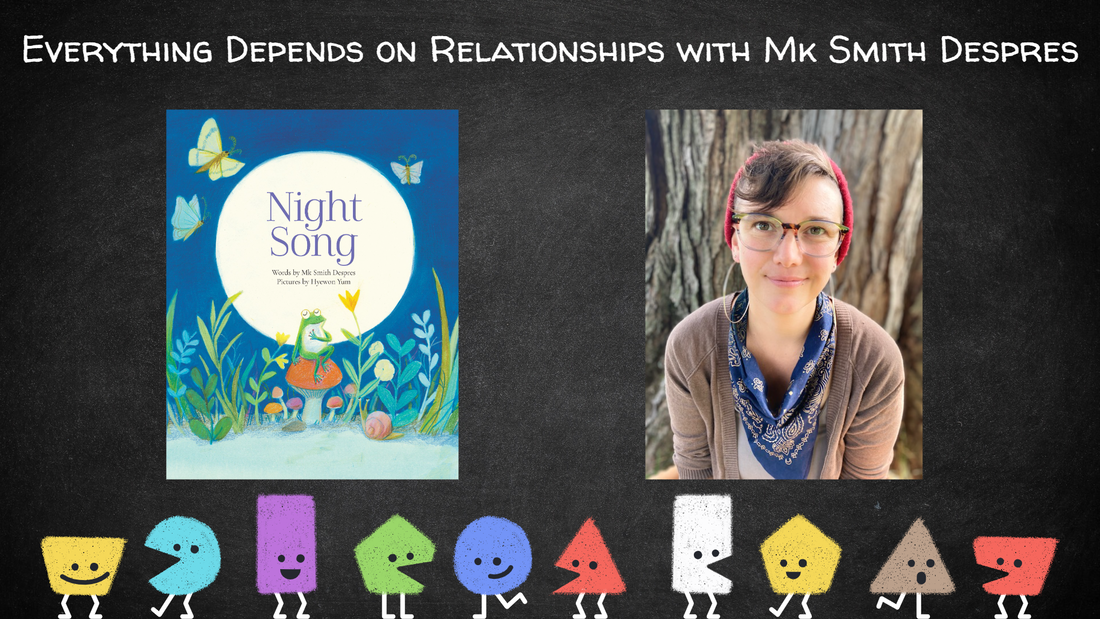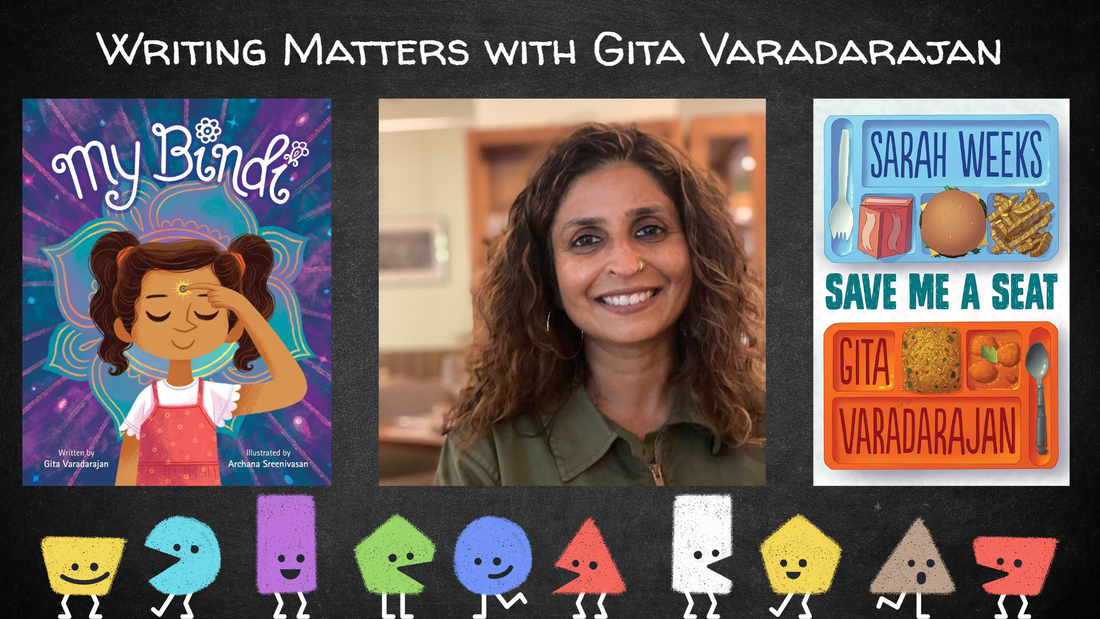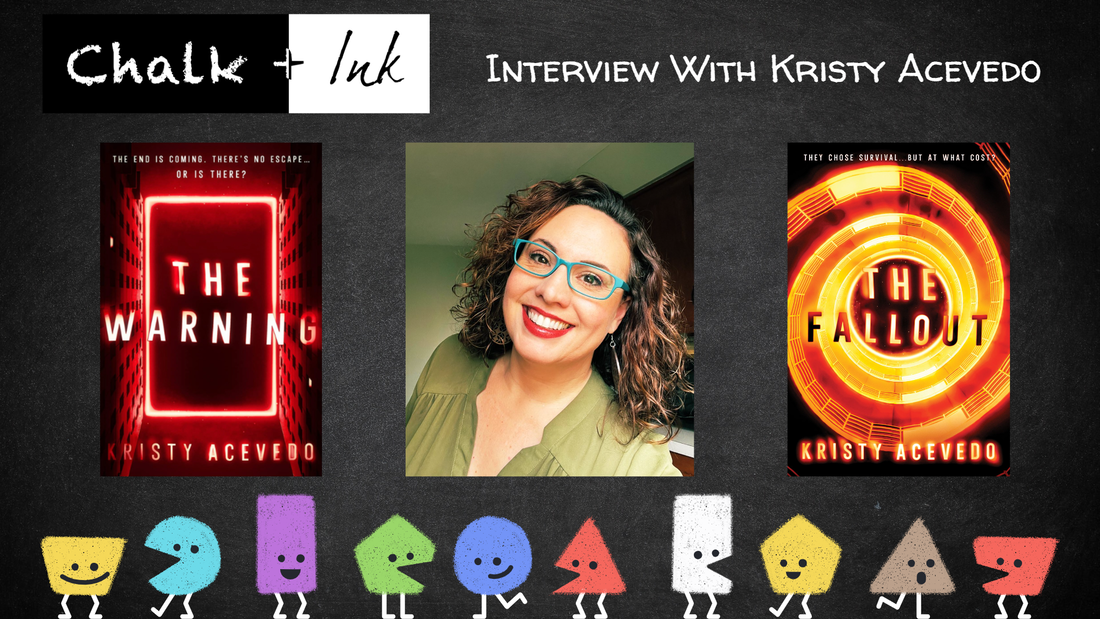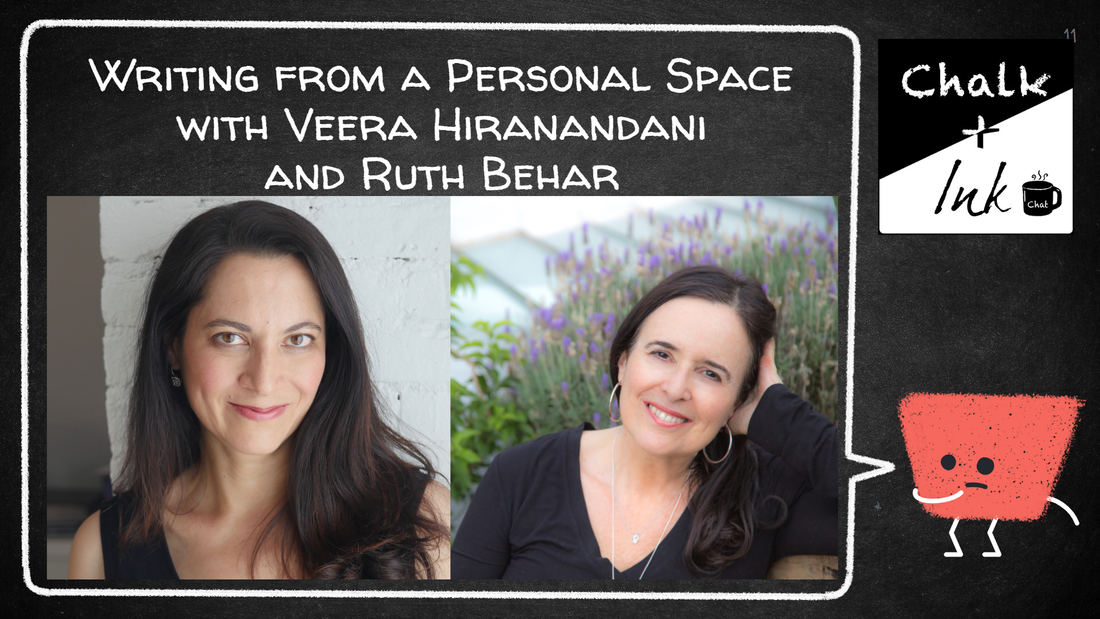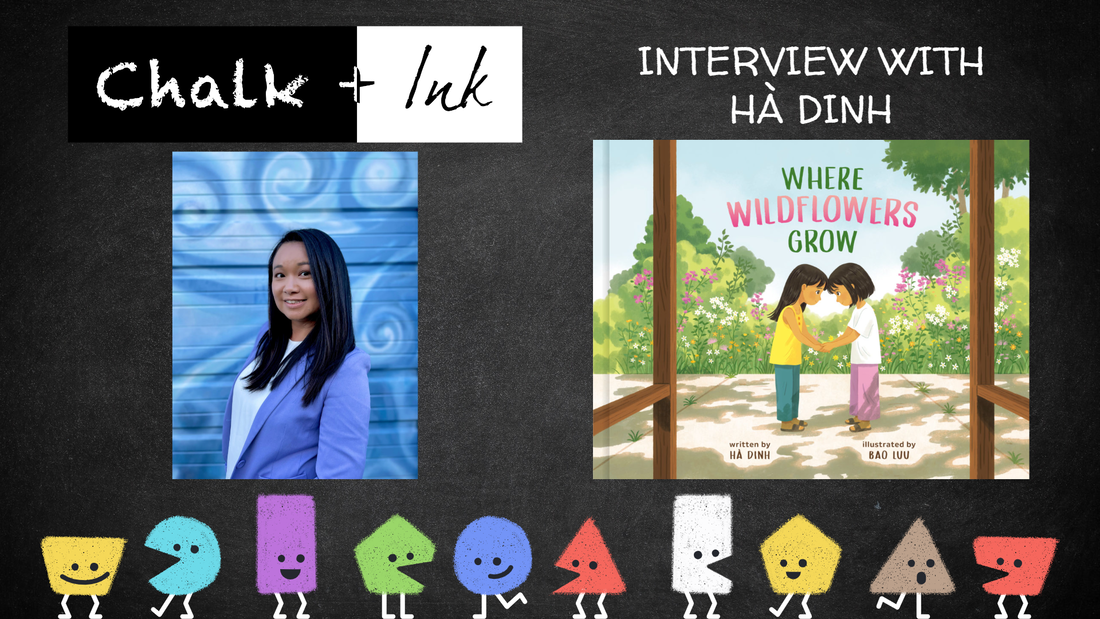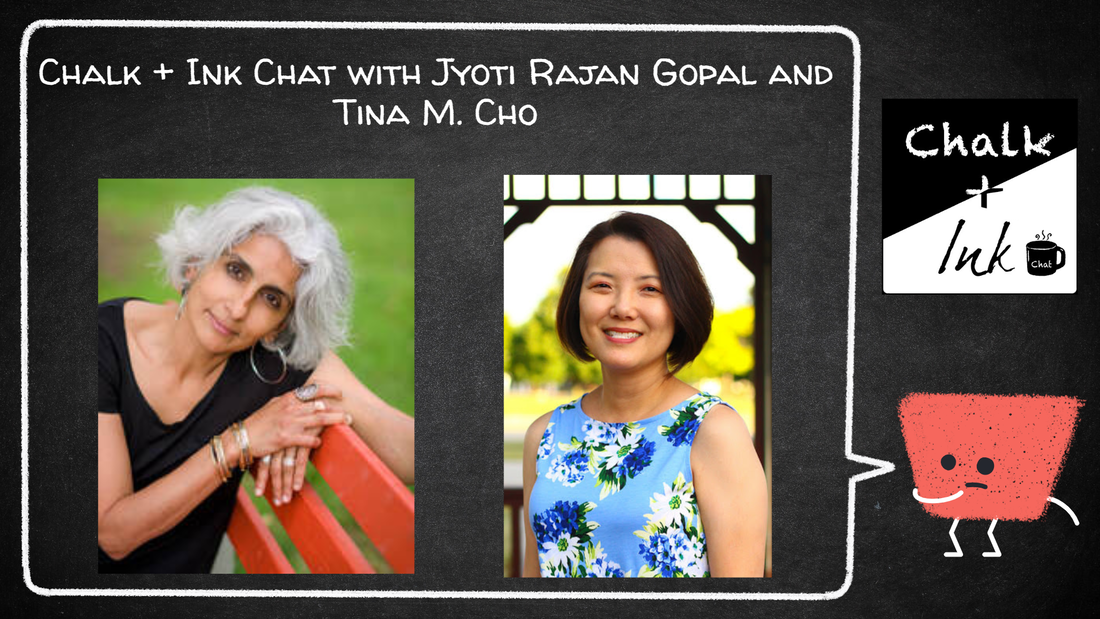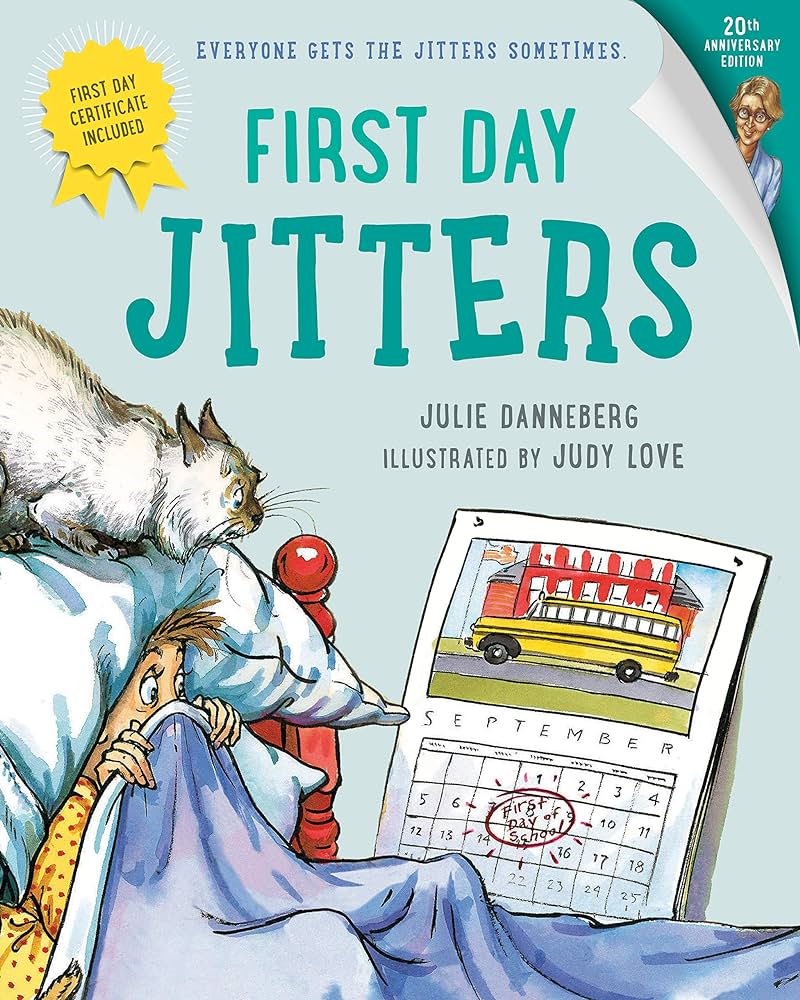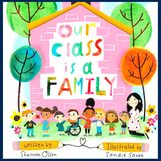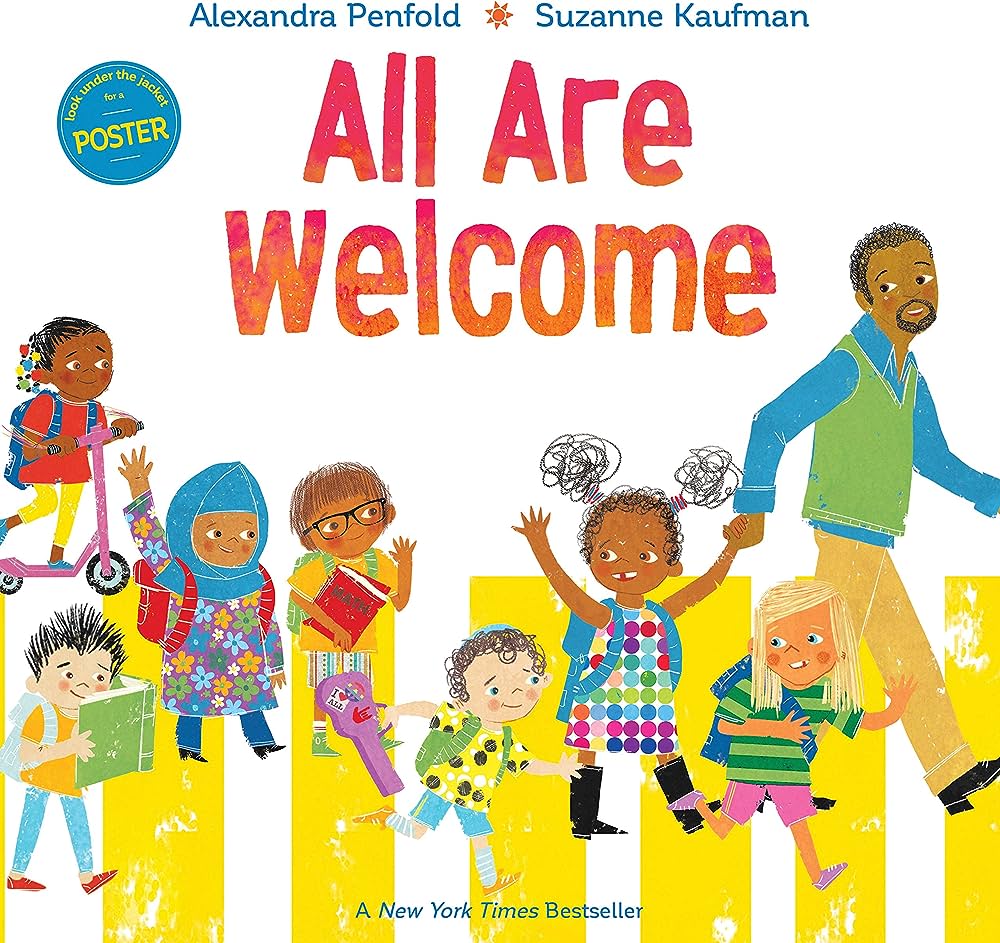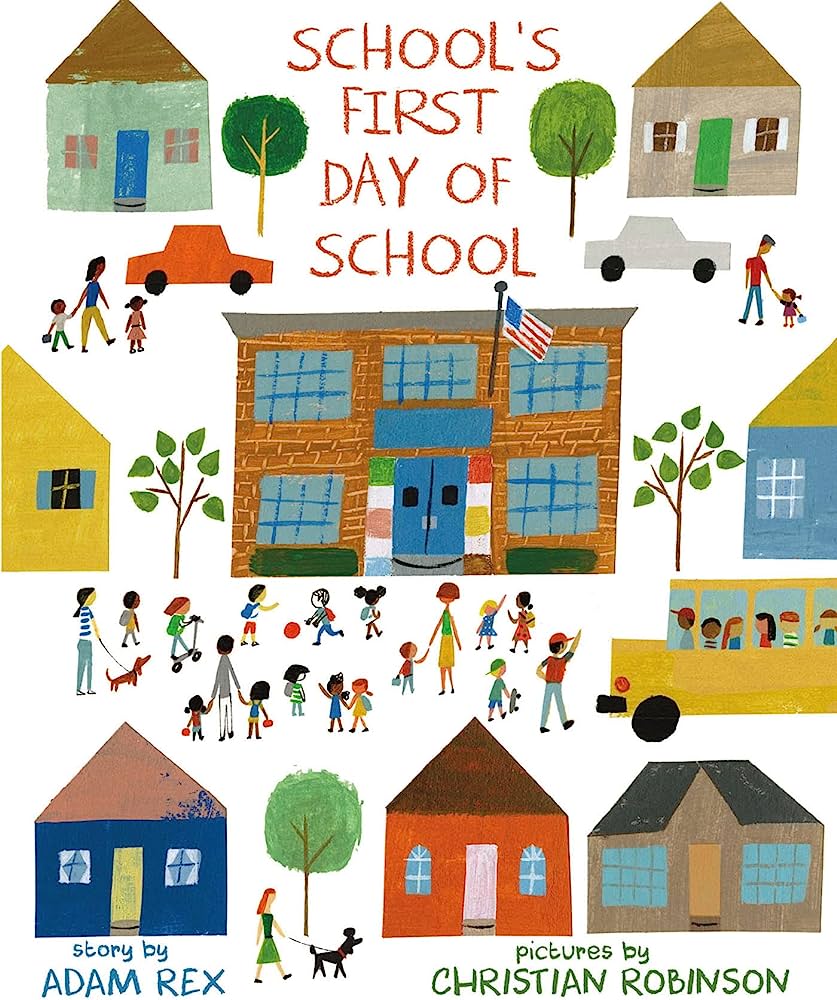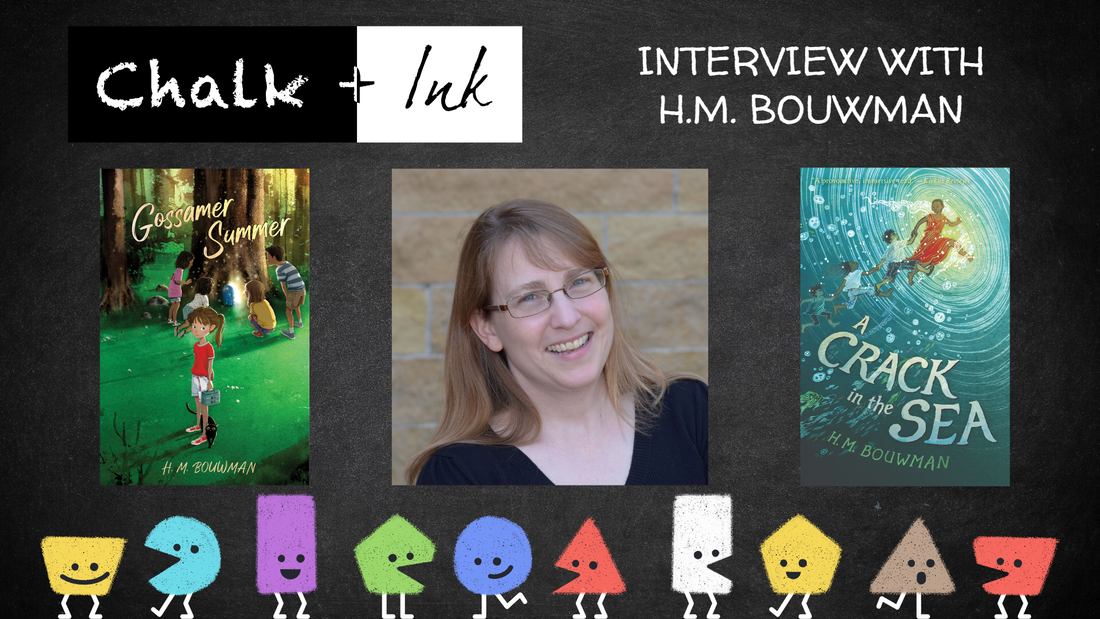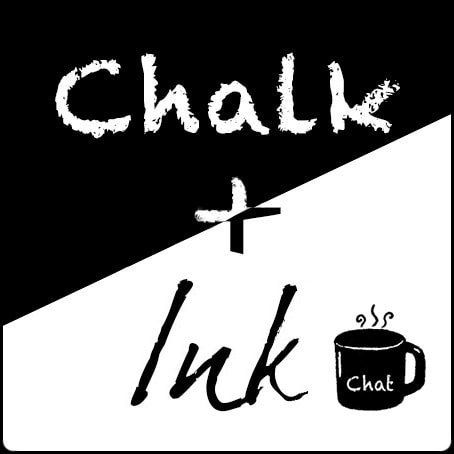|
Welcome back to Chalk + Ink: The Podcast for Teachers Who Write and Writers Who Teach. I’m your host Kate Narita, author of 100 Bugs! A Counting Book, former fourth-grade teacher, and future assistant principal.
Yes, you read that right. On June 14th, I ended my eleven-year career as a fourth-grade teacher, and I start my new job as an assistant principal in July. It was quite an adventure balancing teaching, 550 practicum hours, 18 credit hours, and 4 tasks for the state and podcasting this past school year. But with help from higher power, family, colleagues, and friends I managed to pull it off. Before I sleep for two weeks, I want to help jumpstart everyone’s writing with the top ten writing tips from this season’s guests. Summer is synonymous with adventure. Each tip in this episode celebrates the fact that unstructured time gives us the opportunity to try something new, meet new people, and/or explore new places or aspects of our craft that we’ve never tried before. If you reach the end of this episode and you find yourself wanting more, here’s a cool fact. This is Chalk + Ink’s seventy-seventh episode. If you count the weekends, there are the same number of days of summer fun between the last and first day of school. So, if you want, you could enroll yourself in your own free mini MFA and listen to a different Chalk + Ink episode each day this summer. If you do that, be sure to let me know! Let’s get started with our summer adventure and dive into this season’s top ten tips.
Alright so you packed up your classroom and you came across your writing binder with all your writing activities and organizers that you asked your students to use. Why not try them yourself like Stacey Mozer? I mean why should the students get to have all the fun.
Maybe you finished packing up long ago, you’re already in summer mode and you’ve had some time to reflect and you remember a question a student asked you and it turns out it just may unlock the answer you’ve been searching for to make that picture book manuscript just right. That's what happened to René Colato Laínez. Or maybe your students challenged you to write something like CK Malone’s students but you just didn’t have the time. Well, now you have the time. So, start writing and get on with your adventure.
It’s time to get out of the classroom and head to the library and not just because of those overdue books. No matter where you are in your writing journey, your librarians can help you out. Stacey Mozer’s amazing librarians taught her about the writing industry.
Maybe your librarians haven’t participated in ALA award committees, no worries. You still want to develop a relationship with them because they’re awesome, they’re a font of knowledge and if you’re lucky like Hà Dinh, they’ll help you promote your book.
No matter where you go on your summer adventures, remember to write from a personal place. Veera Hiranandani and Ruth Behar talk about how the characters in their books reflect the broad range of people who have inhabited their lives.
Meanwhile, Janelle Harper talks about how if you don’t see mirrors of yourself and your neighborhood in books, it’s up to you to create those mirrors.
So how do you write from a personal place? Mine your memory moments. Listen to Hà Dinh talk about how she worked hard to unveil layers of complex feelings in Where the Wildflowers Grow.
Maybe you feel like you don’t have more moments to mine. If that’s the case, look at the everyday objects around you and observe your loved ones. An idea just might appear right before your eyes. That’s what happened to Chloe Ito Ward.
Travel somewhere new. If you’re like Tina M. Cho or Jyoti Rajan Gopal, you may just meet someone new to write about.
Or take a page out of MK Smith Despres' book and go on a writing retreat.
The truth is you don’t have to travel to go somewhere new. Sometimes, you just need to dive deep inside a book or deep inside your character to uncover novel places. H.M. Bouwman talks about tuning into her characters’ interiority while revising.
So, how do you know where to start? Listen to Kristy Acevedo talk about how she decides which scenes to write. Sometimes less is more. Jen Gennari cites two revision books she thinks all authors should have and then she talks about how she had to cut in order to dive deeper into her main character’s interiority.
Still feeling stuck? Take a walk outside to clear your mind. That’s what MK Smith Despres does.
But don’t wait till you’re stuck to get outside. Listen to Susan Edwards Richmond explain how nature is a treasure hunt.
Maybe you have little kids at home, and you’re going to have less time to write in the summer than you did during the school year when your kids were in school. If that’s the case, remember to write in the nooks and crannies like Brooke Hartman and Andrew Hacket. Brooke uses the time for marketing.
Meanwhile, Andrew uses the time to peruse manuscripts to figure out why they’re not selling. This is a genius idea, and I can’t wait to try it. Put copies of all your finished manuscripts in a bag and keep it in your car. That way whenever you have an extra ten minutes here or there, you might just find a solution you didn’t know you were looking for.
When Tom Bober and Gita Varadarajan take advantage of residencies and classes, they make sure to look for collaborative partners as well.
Listen to Tom Bober for tips about collaborating during the editing process. Then, Gita Varadarajan talks about collaborating while creating.
So you’ve traveled, walked outside, read books, visited art museums, written in the nooks and crannies of the day, and you’re still stuck. What to do?
Do what Andrew Hacket does and celebrate others. Be patient and remember Kristy Acevedo's observation that writing is like painting and requires multiple layers. Finally, never forget CK Malone's wise words that you will succeed.
I’m signing off for the summer to focus on revising. I know this episode has me ready to write, and I hope it’s done the same for you, too. If it has, please be sure to share this episode with someone who could use it, and remember to write a review. If you want an amazing giveaway from one of these authors like a critique, classroom visit, or a book. Leave a comment below.
Thanks everyone! I'll be back at the end of August. Until then, take care. Bye.
0 Comments
It's Memorial Day, and Andrew and I are honoring Sergeant Patrick Clarke Cumming. Andrew is an incredibly generous, kind hearted, hardworking human being who always tries to make a positive difference in our writing and teaching community. He and I would like to dedicate this episode to Sergeant Patrick Clarke Cumming who was also an incredibly generous, kindhearted human being who worked hard to make a positive difference in our town, state and in our nation. During the episode, we talked about how Andrew’s wife, Kerry, is also a teacher. Kerry taught Patrick first grade. Like Andrew, Kerry is also an incredibly kindhearted, hardworking human being. Even though Patrick was only in first grade, Patrick sensed he could trust Kerry, and he confided in her that he couldn’t read and only seemed like he knew how to read because he memorized pages in books. Kerry knew just how to get him help and set him up for reading services with Annette Markel. By the time second grade rolled around, Annette told Patrick’s parents she could no longer work with him because Patrick had become an advanced reader. Patrick’s parents, Bob and Melissa, are incredibly grateful to Kerry and Annette because they ignited Patrick’s passion for reading. As an adult, Patrick read voraciously, studying world conflict and military history. To celebrate Patrick, Bob, Melissa, and Patrick’s siblings, Jack and Megan, are reading Patrick’s book collection. Back when Andrew and Kerry knew Patrick, Patrick had a mop of gorgeous golden curls that would have made Curlilocks proud. Even though Andrew taught Patrick’s twin brother Jack, and not Patrick, Andrew made sure to take Patrick underneath his wing at recess because Andrew, like Patrick, is someone who always goes above and beyond. I first met Patrick when he was six-years-old, and had the honor of watching him grow up and begin to serve our community in amazing ways. He accomplished more in his twenty-three years than many of us accomplish in a lifetime. I’ll share a few of his accomplishments here. He received the following military decorations: Army Achievement Medal for Operation Boston Hope, Army Commendation Medal for Operation Capitol Response, Army Reserve Component Achievement Medal, National Defense Service Medal, Global War on Terrorism Service Medal, Armed Forces Service Medal COVID, Army Service Ribbon, DCNG Presidential Inauguration Support Ribbon, Massachusetts Service Medal, and Massachusetts Emergency Service Ribbon. Patrick always gave back to his community. In addition to serving in the military, he was a trained EMT and a firefighter. A few weeks before he died, Patrick rescued a stranded hiker from Leominster State Forest. As you go about your day, please keep Patrick in your mind and think about how you can help others. Perhaps you can be more vulnerable on the page or reach out to a newbie writer. Maybe you can dig deep and give a student who you know needs it a little extra tlc. If you're feeling extra generous, please consider helping me raise money for the American Foundation for Suicide Prevention. I'll be walking 16 miles overnight on June 22nd. Click here to help stop the spread of this disease. But most of all, please be kind and gentle to yourselves and those around you. In the soundbite above, Andrew talks about his amazing blog Backstory. Check it out!  Andrew Hacket talks about stealing moments to write, giving back to the community and being true to ourselves. As I mentioned above, Andrew is incredibly kind and generous. So, if you leave a comment below you will be entered to choose between a virtual classroom visit, a picture book critique, or a free book. That's hard to beat. This is our last interview for the 2023-2024 season. I hope to have the top ten writing tips to launch us into a creative summer ready for you by June 14th, which is the end of my school year. Until then, take care. Podcasting by Threes: Podcast Number SevenChalk + Ink: Episode 73; Sit Down and Do It with C.K. MaloneOn today’s show with author and educator, C.K. Malone, we talk about sitting down and getting to work, that tomorrow is a new day, and that anyone can succeed. Have you reviewed the show? If not, please review the show on your preferred podcast app and help me turn 24 in 2024 from a dream into a reality. By doing so, you’ll be entered to win a copy of CK Malone’s A Costume for Charly. Or, if you're reading this post on my website, leave a comment below. Thanks in advance for helping me out. Podcasting by Threes: Podcast Number EightChalk + Ink: Episode 74; Making History 3D with Tom BoberTom Bober, and I talk about making history 3-D, the power of collaboration, and taking things off of our plates. If you would like to win a free copy of Tom Bober and Rebecca Newland's book, Literature and Primary Sources, please leave a comment below or review the show on your favorite podcast app. Podcasting by Threes: Podcast Number NineChalk + Ink: Episode 75; Mining Memory Moments with Chloe Ito WardChloe Ito Ward talks about mining memory moments, authenticity, and celebrating the present. If you haven't yet celebrated Asian/Pacific American Heritage Month in your classroom, be sure to check out Chloe's Love Grows Here it's a heartwarming story that doesn't shy away from difficult conversations. Be sure to leave a comment below or review the show on your favorite podcast app to be entered to win a copy of Chloe's gorgeous book. Podcasting By Threes: Podcast Number FourChalk + Ink: Episode 70; Praise Then Raise with Jen Gennari It was an absolute pleasure speaking with Jen Gennari. Jen is as insightful as her books Muffled and My Mixed Up Berry-Blue Summer, which a lucky listener can be eligible to win simply by leaving a comment below. In this episode we talk about flagging filter words, personifying drafts and cultivating artistic vision. Podcasting By Threes: Podcast Number FiveChalk + Ink: Episode 71; Narwhals, Puppeteers, and Bush Planes with Brooke HartmanTotally enjoyed speaking with Brooke Hartman. I had the pleasure of meeting Brooke at Highlights Foundation at a retreat hosted by our amazing agent, Sera Rivers. Brooke is as humorous as her picture books Klyde the Kraken Wants a Friend and Watch Out for the Lion, which a lucky listener can be eligible to win simply by commenting below. In this episode we talk about the power of social media, breaking through the fourth wall, and staying true to the original story. Podcasting By Threes: Podcast Number SixChalk + Ink: Episode 72; Reclaiming Our Narrative with Janelle HarperTalking with Janelle Harper was an absolute joy. Sometimes I forget how good it feels to laugh. She’s honest, reflective, and positive, which means she’s the perfect person to critique your picture book manuscript. So, be sure to leave a comment below. In this episode we talk about reclaiming narratives, positive phrasing, and creating safe spaces. Be sure to check back at the end of April to read about our last four interviews of the season. Chalk + Ink will feature interventionist C.K. Malone, elementary librarian Tom Bober, substitute teacher Chloe Ito Ward, and Anders' and Corbin's second grade teacher, Andrew Hacket!
Although I've been keeping up with the podcasting, it's been more than a minute since I've updated this page. This school year has been a constant balancing act between teaching fulltime, my fulltime administration certification program, and my writing/podcasting career. Phew! I'm honestly tired just writing that all! Anyway, it's not feasible for me to post every time I publish a podcast episode. So, for the remainder of the season, I'm going to post about multiple podcasts at once. So without further ado, here's a taste of the past three episodes. Podcasting By Threes: Podcast Number OneChalk + Ink: Episode 67; All Things Preschool with |
| | |
In case you're unfamiliar with Ruth and/or Veera's work, there are several parallels, which we explore in depth in this episode. Both authors wrote novels around WWII. Ruth's novel Letters from Cuba is set on the eve of the war in 1939, and Veera's novel, The Night Diary happens two years after the war ends in 1947. Not only are these two novels set in similar eras, they're also both epistolary.
These two novels aren't the only similarity between their bodies of work, either. Both authors have novels set in the 1960s. Veera's How to Find What You're Not Looking For takes place in Connecticut, while Ruth's Lucky Broken Girl takes place in New York.
All four of these novels dive deep into othering be it the othering of Jewish people during WWII, the othering of Hindis and Muslims during the 1947 partition of India and Pakistan, the othering of biracial couples and immigrants in the 1960s. While the novels explore the pain of being othered, they also celebrate the power of perseverance and showcase characters who embrace diversity, even in times of duress.
Finally, as showcased above in the two soundbites, both authors write from deeply personal places, which is why their work is so powerful.
Be on the lookout for both of these authors new releases coming in 2024. I can't wait to read the sequel to Veera's The Night Diary, called Amil and the After or to read Ruth's Across So Many Seas, which she compares to Alan Grat'z stunning novel, Refugee.
Hà and I had a delightful discussion about why she chose to include wildflowers in her powerful picture book debut, Where Wildflowers Grow. I shared a memory of picking a peony off a neighbor's bush for my kindergarten teacher, Ms. Young, and the joy I felt giving it to her followed by the shame of admitting I shouldn't have picked a flower off of someone else's bush. She shared memories of all the sweet bouquets she received as a first-grade teacher.
Unlike me who is a card-carrying member of the early bird group, Ha is a night owl. As soon as her children go to bed, she gets busy creating or researching about writing. She doesn't set a schedule for herself, because that stifles her flow. Instead, she works on whatever calls to her, for however long she's able.
When Ha grew up, she didn't see herself represented in books. She thanks authors Minh Lê and Joanna Ho for blazing the trail for her to tell her story.
During the episode, we talk about Eve Bunting's Fly Away Home, a book we've both used with our students to facilitate discussion about challenges that unhoused people face.
If you'd like to register to be eligible to win a free picture book critique from her, fill in this form by Saturday, October 21st, 2023.
Happy listening!
Chalk + Ink Chat: Episode 63; All Things Kindergarten with Jyoti Rajan Gopal and Tina M. Cho
9/23/2023
We celebrated so many wonderful community building books. Here are just a few of the titles mentioned in the episode.
This year I added Jyoti's book, American Desi. The bumper sticker phrase changes in American Desi, which my students didn't notice. We had a deep discussion about how the changing bumper sticker phrase illuminates the themes of the book, embracing diversity and acceptance.
We talked about the stereotypical representation of grandparents in media. Often times older people images depict older people as being sedentary and rickety. This is not the case in Tina's The Ocean Calls or Jyoti's My Paati's Saris. Both of these grandmas are on the move, filling their grandchildren's lives with vibrant colors.
We also talked about Jyoti's and Tina's upcoming releases. Jyoti's Desert Queen looks absolutely stunning, and ever since I heard about Tina's middle grade graphic novel, I have been waiting anxiously to hold a copy in my hands. It will be a wonderful sliding glass door book to add to my classroom library collection.
Be sure to read Hà Dinh’s wonderful debut picture book, Where Wildflowers Grow, to prepare for our next episode.
Until then, happy listening!
That's what happened in this episode when H.M. Bouwman took a deep dive into interiority. This summer, when I was working on drafting a new novel, I had the thought that I should reread the first chapter of Jennifer Brown's Perfect Escape, try to write it from memory, see what I missed, and then analyze it to figure out how to make the opening chapter of my rough draft better. I never got there due to the demands of my summer classes, but the idea lingered.
Well, it turns out that Heather Bouwman does this exact activity in her college creative writing class with Tracy Deonn's Legendborn to help her students see that they need to add much more interiority to their novels be it interior thoughts, flashbacks, or setting details. There's a lot more space in a novel than a picture book, so use it!
Heather also talked about the power of sharing her writing process with her students. How does one respond when a well-respected critique partner points out that your witch is a half-hearted villain? What does that mean, and how can the problem be fixed? Can sea monsters fix all problems in drafts? Finally, and this one's a lot less fun, what's the difference between revising and editing?
Speaking of revision, that's one of the other topics we delved into. Heather uses revision rounds to flush out the emotional arc of her major and minor characters. In Gossamer Summer, Jojo deals with grief in one way. In order to contrast Jojo's interior arc with the minor characters' interior arcs, she made sure that Jojo's older sister and Jojo's friend dealt with grief in different ways. By using multiple revision rounds to flush out different characters, the reader has many opportunities to find mirrors in the book.
For modern classics, Heather recommends Holes by Louis Sachar and When You Reach Me by Rebecca Stead.
For modern author recommendations, please read anything by Varian Johnson, Gene Luen Yang, and Christina Soontornvat.
But as an expert in eighteenth century literature, she wants make sure she tips her hat to titles from other eras. Please check out James Thurber's The 13 Clocks. It's a playful text that launches into rhymed iambic pentameter. Also, for upper middle grade readers, be sure to read Frederick Douglass's first autobiography, The Narrative of the Life of Frederick Douglass. Heather emphasizes that he's absolutely not in favor of enslavers, which is misinformation that it currently being circulated, and that he writes deceptively simple, beautiful sentences such as, "You have seen how a man was made a slave; you shall see how a slave was made a man."
If you and your class have read some of Heather's novels, and would like to be eligible to win a virtual author's visit with her, please leave a comment below or share this episode on your favorite social media platform and be sure to tag Heather and me.
If you're a preschool or a kindergarten teacher, be sure to join us live on Saturday, September 16th for our first Chalk + Ink Chat of the 2023-2024 school year with kindergarten teachers and authors Tina M. Cho and Jyoti Rajan Gopal. Sign up here.
Happy listening!
Chalk + Ink Chats
Want to hang out with teachers who write and writers who teach? Fill this form to join our
next chat on Sunday, 10/29 at noon EST with Susan Edwards Richmond and Rene Colato Lainez. Feeling generous?
Become a Chalk + Ink Patreon Supporter or buy me a latte.
Archives
October 2023
September 2023
August 2023
May 2023
April 2023
March 2023
February 2023
January 2023
December 2022
November 2022
October 2022
September 2022
August 2022
July 2022
May 2022
April 2022
March 2022
February 2022
January 2022
December 2021
November 2021
October 2021
September 2021
August 2021
May 2021
April 2021
March 2021
February 2021
January 2021
December 2020
November 2020
October 2020
September 2020
June 2020
May 2020
April 2020
March 2020
February 2020
January 2020
December 2019
November 2019
October 2019
September 2019
August 2019
July 2019
June 2019
April 2019
March 2019
January 2019
December 2018
November 2018
October 2018
September 2018
August 2018
June 2018
April 2018
March 2018
February 2018
January 2018
November 2017
October 2017
September 2017
August 2017
June 2017
May 2017
April 2017
March 2017
February 2017
January 2017
December 2016
November 2016
October 2016
September 2016
August 2016
May 2016



























